Nottinghamshire
Explore hidden histories, historic photos, and things you never knew about Nottinghamshire from the collections and archives of Historic England.
Discover your local listed buildings and places
Introducing some of Nottinghamshire's most historic sites, included in the National Heritage List for England. Some of these captions have been summarised by AI. Click through for the official List entry. Skip this section and go to place by numbers
Arkwright Building, Nottingham Trent University
Nottingham
This a very fine and elaborate example of later C19 architecure in the Gothic Revival style by an architectural firm which designed buildings of world renown.
Headstocks and Powerhouse at the site of the former Clips…
Clipstone
A mid- C20 industrial complex, comprising the headstocks, power house and heapstead structures and buildings of the former Clipstone colliery in Nottinghamshire.
Annesley motte and bailey castle
Annesley
Annesley motte and bailey castle is a Norman fortification built to control a royal forest, historically linked to the Sheriff of Nottingham from Robin Hood legends.
Nottingham Arboretum
Nottingham
A mid C19 public park designed by Samuel Curtis. Read the official list entry to find out more.
Building D6 at Boots Factory Site
Nottingham
Industrial building known as the Boots Factory D6 (dry processes) building, constructed for the Boots Pure Drug Co. in 1938 and designed by Sir Evan Owen Williams.
Worksop Castle: eleventh century motte castle and twelfth…
Worksop
Worksop Castle, a medieval motte castle, exemplifies Norman fortifications and the transition from timber to stone construction, serving as a strategic post-conquest monument.
Swingate Water Tower including paired flight of steps and…
Kimberley
A water tower, designed by Ritchie and Partners for the Corporation of Nottingham Water Department, in neo-classical style, constructed in the later 1940s and commissioned in 1950.
11 Pelham Street and 3 Thurland Street, formerly the Nott…
Nottingham
The former Nottingham and Nottinghamshire Bank, built in 1879 to 1882 to designs by Watson Fothergill of Nottingham, with internal alterations of 1985 by the Seymour Harris Partnership and...
Former Police Headquarters and Central Fire Station
Nottingham
A former police and fire station, built 1938-1940, and designed by R M Finch OBE, Nottingham City Engineer, assisted by Alexander Steele, with extensions and alterations in the mid-to-late...
Ollerton Hall
Ollerton and Boughton
Ollerton Hall, an early 18th-century country house, features distinctive architectural elements like the framed staircase with vase and stem balusters despite its poor condition.
Newstead Abbey
Linby
Newstead Abbey was founded as a priory in the 12th century and later became the home of Lord Byron. It features historical gardens and was modified by Colonel Thomas Wildman.
County House
Nottingham
Townhouse, with possible C15 or C16 origins, rebuilt between 1728 and 1733, remodelled and extended in 1833 to form judges' lodgings, subsequently converted to offices in 1922, and further...
Ye Olde Trip to Jerusalem Public House
Nottingham
A public house, principally dating to the late-C17 and C18, extended in the C19.
Boots D90 West Headquarters Building
Nottingham
Headquarters office building. 1966-8 by Skidmore, Owings and Merrill, chief architect Bruce Graham; with Yorke Rosenberg Mardall, chief architect Brian Henderson.
The Howitt Building (former Raleigh Cycle Company main of…
Nottingham
An inter-war office building, designed for the Raleigh Cycle Company by the distinguished Nottingham architect T Cecil Howitt and now in use as a business centre, community and cultural...
Building D10 at Boots Factory Site
Nottingham
Industrial building known as D10 constructed for the Boots Pure Drug Co. in 1932 by Sir Evan Owen Williams. Read the official list entry to find out more.
Annesley Hall
Annesley
Annesley Hall, a historically rich estate dating back to the 13th century, features ancient parklands and gardens, notable residents like Ralph de Annesley, and connections to Lord Byron.
Former bus garage, 270-276 Huntingdon Street
Nottingham
A little-altered, purpose-built bus garage, designed in a 'Moderne' style for the Barton Transport bus company and completed in 1939. Read the official list entry to find out more.
King John's Palace
Kings Clipstone
Royal palace or hunting lodge, built in the mid C12, and operational until the close of the C15. Visited by every English king from Henry II until Richard II.
Babworth Hall
Babworth
Babworth Hall features an 18th-century landscape by Humphry Repton, known for expanding gardens, and historical role as a convalescent hospital during World War I.
Wollaton Hall
Nottingham
Wollaton Hall, built by Francis Willoughby between 1580 and 1588, is an important Elizabethan house in Nottinghamshire. It features formal gardens and has been a public park since 1926.
Greasley Castle
Greasley
Greasley Castle, more accurately a medieval fortified house, built for Nicholas de Cantelupe, survives as buried archaeology, earthworks and standing remains, embedded in the current farm...
Council House, Exchange Buildings and Adjoining Shops and…
Nottingham
Council House with offices and shopping arcade, and adjoining shops and bank, forming a rectangular island block. 1924-29. By T. Cecil Howitt for Nottingham City Council.
Inland Revenue Centre Office Buildings, Nottingham
Nottingham
Six office buildings for the Inland Revenue of 1993 - 1995 by Michael Hopkins & Partners. Read the official list entry to find out more.
Newark Castle
Newark
The ruined and buried remains of an episcopal castle of the Bishops' of Lincoln, built c 1135-39 by Bishop Alexander on the site of a Norman motte and bailey castle which itself stands on a...
Clumber Park
Babworth
Clumber Park, a historic estate in Nottinghamshire, features 18th-century landscaping and 19th-century garden designs.
Welbeck Abbey
Carburton
Welbeck Abbey, originally a Premonstratensian abbey from 1153, evolved into a grand estate with gardens by Repton, Parsons, and Partridge, inhabited by influential figures like Sir Charles...
General Cemetery
Nottingham
An Anglican cemetery of 1836 with Dissenters' extension added in 1865, both with their own mortuary chapels, since demolished. Read the official list entry to find out more.
36-44 Long Row and 2-20 Market Street, Nottingham (former…
Nottingham
A department store on the corner of Long Row and Market Street of 1927-1928 by Bromley and Watkins incorporating: buildings on Long Row by William Dymock Pratt of 1893-1896, a late 1950s...
Thoresby Park
Clumber and Hardwick
Thoresby Park, an architectural and landscaping marvel from the 19th century, features contributions by Anthony Salvin and Humphry Repton.
Canopy to former petrol station, Markham Moor
West Drayton
Canopy and structural supports to former petrol filling station, constructed in 1960-61 to designs by architect Hugh Segar (Sam) Scorer and structural engineer Dr Hajnal-Kónyi.
Church Cemetery
Nottingham
A cemetery laid out by Edwin Patchitt for the Church Cemetery Company and opened in 1856. Read the official list entry to find out more.
Highfields Park
Nottingham
A public park laid out to the designs of Percy Morley Horder. Read the official list entry to find out more.
Inland Revenue Centre Amenity Building, Nottingham
Nottingham
Amenity centre built between 1993 and 1994 to designs by Michael Hopkins & Partners, as part of the Inland Revenue Centre. Read the official list entry to find out more.
Bromley House
Nottingham
Town house built about 1752, possibly to the designs of Sir Robert Taylor, converted into a subscription library in 1821.
Nottingham Municipal War Memorial
West Bridgford
Municipal war memorial, dated 1927. By T Wallis Gordon, City Engineer. Portland stone ashlar, with wrought-iron gates.
Greasley Beauvale D H Lawrence Infant School
Greasley
Board school, 1877-8 by R. C. Sutton of Nottingham, extended in the 1880s. Read the official list entry to find out more.
Beeston Railway Station, including the canopy to platform…
Beeston
Railway station building of 1847, restored in 1986, with late-C19 canopy to platform 1. Adjacent late-C19 shelter to platform 1 and a similar shelter to platform 2.
Explore more
Search for more listed placesNottinghamshire through time
This timeline shows the first period of use for buildings and places on the National Heritage List for England, just one of the details recorded for every list entry. Click around to see how Nottinghamshire changes over time. Skip this section and go to aerial photos
Prehistoric Before AD 43
Prehistory covers a million years of human occupation before the Roman invasion and the introduction of writing. Primarily hunter-gatherers of several human species including Neanderthals, the peoples moved across Europe, hunting animals, exchanging ideas and developing complex culture and belief systems including burial rites and astronomical understanding, as at Stonehenge for example.
Roman AD 43 to AD 410
Britain was invaded by four legions of the Roman army in AD 43, who relatively rapidly conquered England from landing points in Kent. Parts of Wales and Scotland soon followed.
Roman culture brought urbanism, monumental buildings, wide-ranging religious beliefs, writing, and strong social hierarchy. The Roman administrative system was withdrawn in AD 410.
Early medieval AD 410 to AD 1066
This period, often associated in England with Anglo-Saxons and Vikings, saw a reduction in urban living from the Roman period and increased migration from northern Europe.
Traces of this period can be found in cemeteries, particularly in artefacts and in some of the very early churches, as this period also saw the growth of Christianity in Britain.
Medieval AD 1066 to AD 1540
This period, sometimes known as the Middle Ages, began with the Norman invasion in AD 1066. It saw a significant rise in military and defensive buildings such as castles and earthworks, as well as religious houses dominating a largely agricultural landscape.
The monarchy and Church dominated the period, which also saw the break with the Roman Catholic Church and the English reformation.
Post medieval AD 1540 to AD 1901
The Post-Medieval period brought seismic changes to life in England, with religious reformation leading to the democratization of worship and the destruction of hundreds of religious houses.
In parallel, there was a huge expansion of scientific study and enlightenment that permanently altered the nation's social structure and landscape. Industrialization and mass production lead to wider global trade, emigration, and immigration.
20th century AD 1901 to AD 2000
The 20th century saw an incredible expansion of England's transport networks, with suburban growth shadowing rapid infrastructural expansion. The establishment of state schools, hospitals, and modern technical colleges, with new architectural styles, radically changed the appearance of towns and cities.
Two catastrophic world wars and the 1918 pandemic also brought unprecedented change, altering England's built environment and social structures forever.
Prehistoric Before AD 43
Prehistory covers a million years of human occupation before the Roman invasion and the introduction of writing. Primarily hunter-gatherers of several human species including Neanderthals, the peoples moved across Europe, hunting animals, exchanging ideas and developing complex culture and belief systems including burial rites and astronomical understanding, as at Stonehenge for example.
Roman AD 43 to AD 410
Britain was invaded by four legions of the Roman army in AD 43, who relatively rapidly conquered England from landing points in Kent. Parts of Wales and Scotland soon followed.
Roman culture brought urbanism, monumental buildings, wide-ranging religious beliefs, writing, and strong social hierarchy. The Roman administrative system was withdrawn in AD 410.
Early medieval AD 410 to AD 1066
This period, often associated in England with Anglo-Saxons and Vikings, saw a reduction in urban living from the Roman period and increased migration from northern Europe.
Traces of this period can be found in cemeteries, particularly in artefacts and in some of the very early churches, as this period also saw the growth of Christianity in Britain.
Medieval AD 1066 to AD 1540
This period, sometimes known as the Middle Ages, began with the Norman invasion in AD 1066. It saw a significant rise in military and defensive buildings such as castles and earthworks, as well as religious houses dominating a largely agricultural landscape.
The monarchy and Church dominated the period, which also saw the break with the Roman Catholic Church and the English reformation.
Post medieval AD 1540 to AD 1901
The Post-Medieval period brought seismic changes to life in England, with religious reformation leading to the democratization of worship and the destruction of hundreds of religious houses.
In parallel, there was a huge expansion of scientific study and enlightenment that permanently altered the nation's social structure and landscape. Industrialization and mass production lead to wider global trade, emigration, and immigration.
20th century AD 1901 to AD 2000
The 20th century saw an incredible expansion of England's transport networks, with suburban growth shadowing rapid infrastructural expansion. The establishment of state schools, hospitals, and modern technical colleges, with new architectural styles, radically changed the appearance of towns and cities.
Two catastrophic world wars and the 1918 pandemic also brought unprecedented change, altering England's built environment and social structures forever.
Aerial photos of Nottinghamshire
Aerial photography helps reveal secrets of England's changing landscapes that are impossible to see from the ground. Skip this section and go to archive images
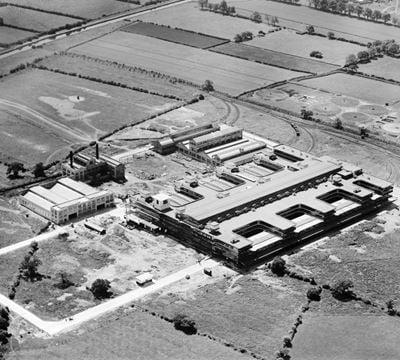
Beeston
The Boots Pure Drug Co. D10 "Wets" Factory, Beeston, 1933

Beeston
The Boots Pure Drug Co Works, Beeston, 1939

Kirklington
Kirkington Hall, Kirklington, 1947
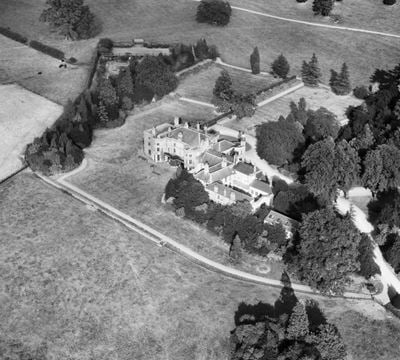
Kirklington
Kirkington Hall, Kirklington, 1947

Wellow
The Hall and gardens and environs, Wellow, 1938
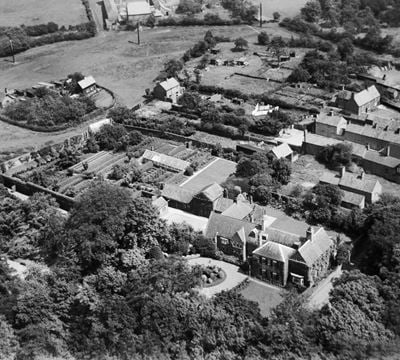
Wellow
The Hall and gardens, Wellow, 1938

Nottingham
The Trent Building at University Park, Nottingham, 1927

Nottingham
The Trent Building and University Park, Nottingham, 1952

Nottingham
The widening of Trent Bridge in progress, Nottingham, 1924
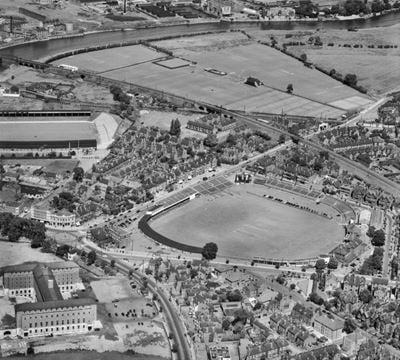
West Bridgford
Trent Bridge Cricket Ground and environs, West Bridgford, 1953
Nottinghamshire in the Historic England Archive
The Historic England Archive cares for over 15 million images, dating from the 1850s to the present day. Discover stunning images of Nottinghamshire's past. Skip this section and go to stories about heritage
Charles George Harper Collection
Rushcliffe, Nottinghamshire
Date created: 1892 - 1933
A view from the south of St Lawrence's Church
Eric de Mare
University Park, City Of Nottingham, City Of Nottingham
Date created: 1963 - 1980
General view of Lenton Hall at Nottingham University.
John Gay Collection: Rural Life
Nottingham, City Of Nottingham, City Of Nottingham
Date created: 1959
An elevated view of the City of Nottingham seen from The Park
John Gay Collection: Miscellaneous
City Of Nottingham
Date created: Jul 1955
Portrait of a member of the Royal Agricultural Society of England at the Royal Show
John Gay Collection: Counties
Wollaton, City Of Nottingham, City Of Nottingham
Date created: Jul 1955
A Longhorn cow lying in a stall at the Royal Show, Wollaton Park, Nottingham
John Laing Collection
Broxtowe, Nottinghamshire
Date created: 17 Aug 1966
An interior view of a building under construction at the Trowell Service Area on the M1 Motorway near Nottingham
London, Midland and Scottish Railway Company
Rushcliffe, Nottinghamshire
Date created: 05 Oct 1910
A view looking east across the River Soar towards St James' Church
Alfred Newton and Sons
Rushcliffe, Nottinghamshire
Date created: 1896 - 1920
GENERAL VIEW ACROSS FIELD
Nigel Temple Collection of Postcards of Parks and Gardens
City Of Nottingham
Date created: 1920 - 1935
GENERAL VIEW SHOWING THE ROCK GARDENS WITH RECREATION GROUND VISIBLE BEYOND
John Laing Collection
Broxtowe, Nottinghamshire
Date created: 17 Aug 1966
A view of the Trowell Service Area on the M1 Motorway during construction, showing the pedestrian footbridge over the carriageways
London, Midland and Scottish Railway Company
Rushcliffe, Nottinghamshire
Date created: 06 Sep 1922
A view looking north-east across the River Soar, with the tower and spire of St James' Church visible through the trees
Alfred Newton and Sons
Rushcliffe, Nottinghamshire
Date created: 1896 - 1920
EXTERIOR VIEW FROM REAR
Stories about heritage in your local area
Historic England publishes news, blogs, research, videos, and podcasts celebrating England's rich heritage. Discover the stories we have about Nottinghamshire. Skip this section and go to education
The Buildings of Architect Watson Fothergill
Mentions Mortimer House the Old Castle Inn, Barker Gate Warehouse, 15 and 17, George Street
Discover the buildings of Nottingham architect Watson Fothergill, who designed buildings such as Queen's Chambers and his George Street offices.
Narrative Structures: England’s Literary History in 11 Places
Mentions Newstead Abbey and Adjoining Boundary Wall
Discover the historic sites in England where famous writers found their inspiration.
5 Art Nouveau Buildings in England
Mentions 10 Pelham Street and 2A & 2B High Street
Explore some of England’s beautiful Art Nouveau buildings featuring flowing lines and floral designs.
5 Listed Pub Signs in England
Mentions Pub Sign in Front and to the West of the Vale Hotel (Public House), The Vale Hotel (Public House)
Take a look at these historic calling cards for pubs and inns across England.
What Is the Oldest Pub or Inn in England?
Mentions Ye Olde Trip to Jerusalem Public House, The Bell Inn
Many pubs and inns claim to be the oldest pub in England. Here are the facts.
10 Places That Tell the Story of the Mayflower
Mentions Manor House Farmhouses
Passengers of the Mayflower laid the foundations for what would become the United States of America.
7 Places That Tell Stories of the Windrush Generation
Mentions The Howitt Building (former Raleigh Cycle Company main offices)
The arrival of the Windrush generation in 1948 marked the dawn of modern multicultural Britain.
Connecting People and Places
Mentions The Howitt Building (former Raleigh Cycle Company main offices)
A team of aspiring architects have been researching and visiting places of historic interest to BAME communities.
8 Out of This World Examples of Space Age Architecture
Mentions Canopy to former petrol station, Markham Moor
Design has always mirrored society, and both the Space Race and the Moon Landing had a huge impact on the era.
The Chilwell catastrophe: Fatal explosion on the home front
Mentions Memorial to workers of National Filling Factory No.6, Chilwell
One hundred years ago a catastrophic explosion tore through the National Shell Filling Factory at Chilwell, Nottinghamshire.
9 Luxurious Listed Loos
Mentions Public Conveniences
Our public facilities embody a proud civic heritage of social responsibility, as well as changing attitudes to public health and cleanliness.
Allotmentitis: How Britain Dug for Victory
Mentions Bagthorpe Gardens
Allotmentswere born out of a national drive for self-sufficiency.
Research Reports Roundup February 2025
Mentions Nottinghamshire
A roundup of the latest additions to our research reports database from October 2024 to February 2025, arranged by theme.
50 Years of Flying for Heritage
Mentions Nottinghamshire
Learn about discoveries made in over 50 years of flying by Historic England aerial photographers and their predecessors.
Malt Kilns and Malthouses
Mentions Nottinghamshire
A new book tells the important story of how maltings evolved in England and looks at their future use.
500 Years of Oasts and Hop Kilns in England
Mentions Nottinghamshire
An overview of the research behind a recent Historic England book, which tells the story of hop processing.
16 Remarkable Historic Places Listed in 2023
Mentions Swingate Water Tower, Nottinghamshire
Take a closer look at the historic gems that were examined, protected and added to the National Heritage List for England in 2023.
Heritage at Risk in the Midlands Revealed
Mentions Bromley House, 25, 27 and 29, Wheeler Gate, Nottinghamshire
41 sites have been saved and 32 sites added to the Heritage at Risk Register 2023 in the Midlands.
Historic England Highlights Fascinating Heritage Sites Listed in 2022
Mentions Church of St Aidan, Nottinghamshire
As 2022 draws to a close, Historic England highlights gems added to the National Heritage List for England (NHLE) over the last 12 months.
Successful Heritage Regeneration Programme Has Revived Historic Towns Across England
Mentions Birkin Building
Historic England’s £6 million Heritage Action Zone scheme has unleashed the power of heritage to breathe new life into 10 historic towns.
Historic England Reveals its Heritage at Risk Register 2021
Mentions The Cannon Fort and Adjoining Dock, Nottinghamshire
Historic England publishes its annual Heritage at Risk Register, the yearly health-check of England’s most valued historic places.
Captivating Sites Across England Listed During 2020
Mentions Retford Railway Station and gate piers with attached walls to north, Nottinghamshire
Highlights from over 400 historic places which have been added to the National Heritage List for England in 2020.
Historic England Announces Covid-19 Emergency Grants to Help Recovery of Heritage Sector
Mentions Hunger Hill Gardens, Stonepit Coppice Gardens and Gorseyclose Gardens
£1.8 million in grants for 70 projects to help tackle the impact of Coronavirus on the heritage sector.
Rare Second World War Command Post and London War Memorial Listed to Celebrate VE Day
Mentions Battle Headquarters, Nottinghamshire
Unusual Second World War battle headquarters and war memorial which commemorates civilian casualties among the British war dead listed.
Nottinghamshire's social history through photos
Over 10,000 images from the Historic England Archive have been specially selected and re-captioned for teachers, students, and anyone who wants to learn more about their local area. Skip this section and go to grant-aided places
Ye Olde Trip to Jerusalem, Brewhouse Yard, Nottingham, Nottinghamshire
Period: 2000s (2000 - 2009)
This inn was built mainly in the 17th and 18th centuries.
Ye Olde Trip to Jerusalem, Brewhouse Yard, Nottingham, Nottinghamshire
Ye Olde Trip to Jerusalem, Brewhouse Yard, Nottingham, Nottinghamshire
Period: 2000s (2000 - 2009)
Ye Olde Trip to Jerusalem is claimed to be the oldest inn in England, founded during the Crusades.
Ye Olde Trip to Jerusalem, Brewhouse Yard, Nottingham, Nottinghamshire
Worksop Priory Gatehouse, Worksop, Nottinghamshire
Period: Medieval (Middle Ages) (1066 - 1484)
This priory gatehouse was built in the early 14th century. It was once part of Worksop Priory. It was originally known as Radford Priory.
Worksop Priory Gatehouse, Worksop, Nottinghamshire
Wollaton Hall, Wollaton Park, Nottingham
Period: Tudor (1485 - 1602)
This country house was built in 1580-88 to designs by Robert Smythson. Alterations were carried out after 1688.
Wollaton Hall, Wollaton Park, Nottingham
Tags
Wollaton Hall, Wollaton Park, Nottingham, Nottinghamshire
Period: Tudor (1485 - 1602)
Exterior of Wollaton Hall in Nottingham
Wollaton Hall, Wollaton Park, Nottingham, Nottinghamshire
Windmill, Misson, Nottinghamshire
Period: 1930s (1930 - 1938)
This tower mill was built in 1863. When photographed in 1936 it was in full working order and was being operated by Mr Sleight.
Windmill, Misson, Nottinghamshire
Windles Square, Calverton, Nottinghamshire
Period: Georgian (1714 - 1836)
These 11 knitters' cottages (now 8 houses) were built in 1834. They are notable as an early group of knitters' cottages with ground floor workrooms.
Windles Square, Calverton, Nottinghamshire
Winding House at Bestwood Colliery, Bestwood St Albans, Nottinghamshire
Period: Victorian (1837 - 1901)
This winding house was built in 1873. Its vertical winding engines are unusual in Great Britain. This is said to be the sole in situ example.
Winding House at Bestwood Colliery, Bestwood St Albans, Nottinghamshire
Discover more
Ready for more local heritage? Take a look at these other places nearby

Gedling
Local Authority District
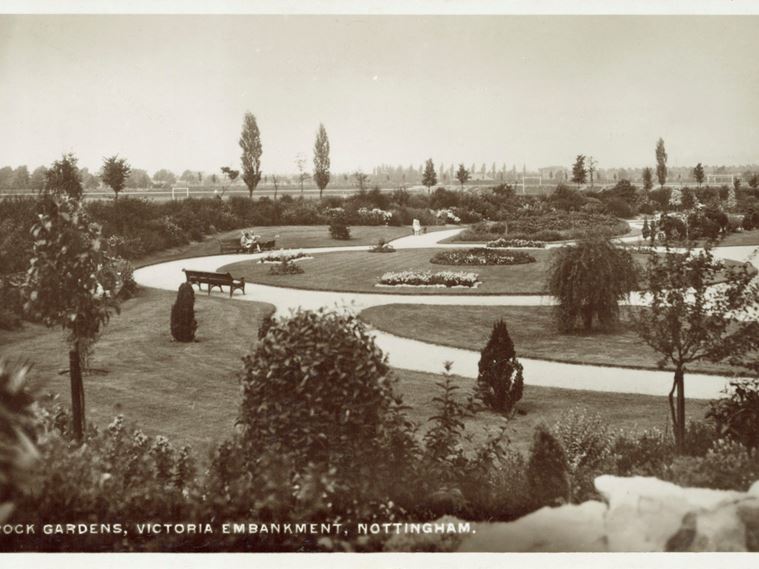
Nottingham
Local Authority District

Newark and Sherwood
Local Authority District